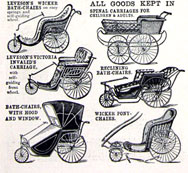Bath Chair
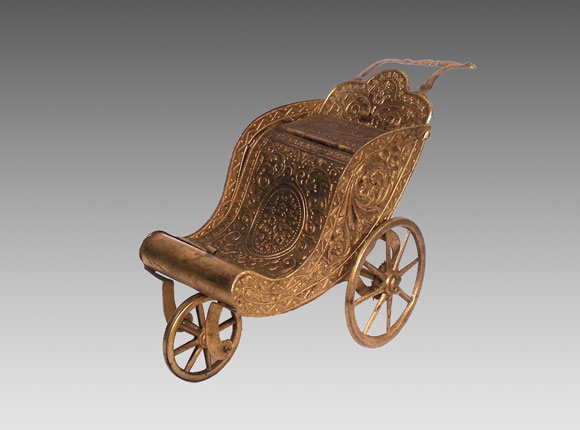
Needle Case (photographs courtesy of Bunny's Place)
Design Details
Needle Case Type: |
Figural |
Patent/Registered to: |
Unknown |
Patent/Design Representation #: |
Unknown |
Patent/Design Registration Date: |
Unknown |
Location of Patent/Design Registration: |
Unknown |
Reference #: |
Unknown |
Dimensions: |
Unknown |
Material: |
Brass |
Name Variations: |
Unknown |
Other Variations: |
Invalid Chair |
Additional Photographs
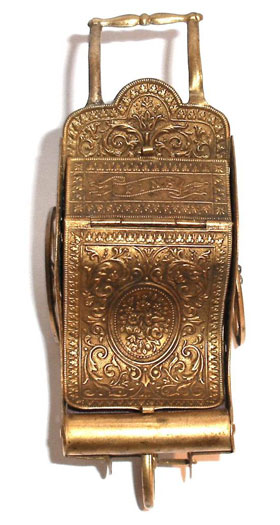
Top view with the word "Pins" on the bench (lid)
Facts
During the Victorian period wheeled chairs like the one pictured below were very popular with the disabled and the elderly as well as the
wealthy. These chairs were made of wicker or a combination of wood, metal, cloth and glass and came in several different varieties.
They were used most often at spa towns and seaside resorts to move people from one area to another.
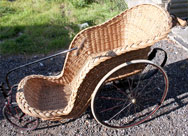
History
Although the first records of wheeled chairs being used to transport people appeared in China in the 3rd century BCE, it wasn’t until
around 525CE that we find drawings of them on Chinese artwork. About 1750 a three-wheeled chair consisting of a small carriage mounted
on two wheels beneath a seat with a smaller wheel in front was created by John Heath of the town of Bath in the UK. As a result the
chair became known as the ‘bath chair’. It was pushed from behind and contained a rod that connected to the front wheel which allowed
the occupant to steer the vehicle.
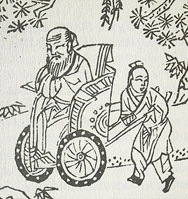
Miscellaneous
In 1849 the company Leveson & Sons was founded in London and they became one of the leading producers of bath and invalid
chairs. Illustrated advertisements appeared in many health related Victorian books and journals where up to 6 different models were
pictured.
